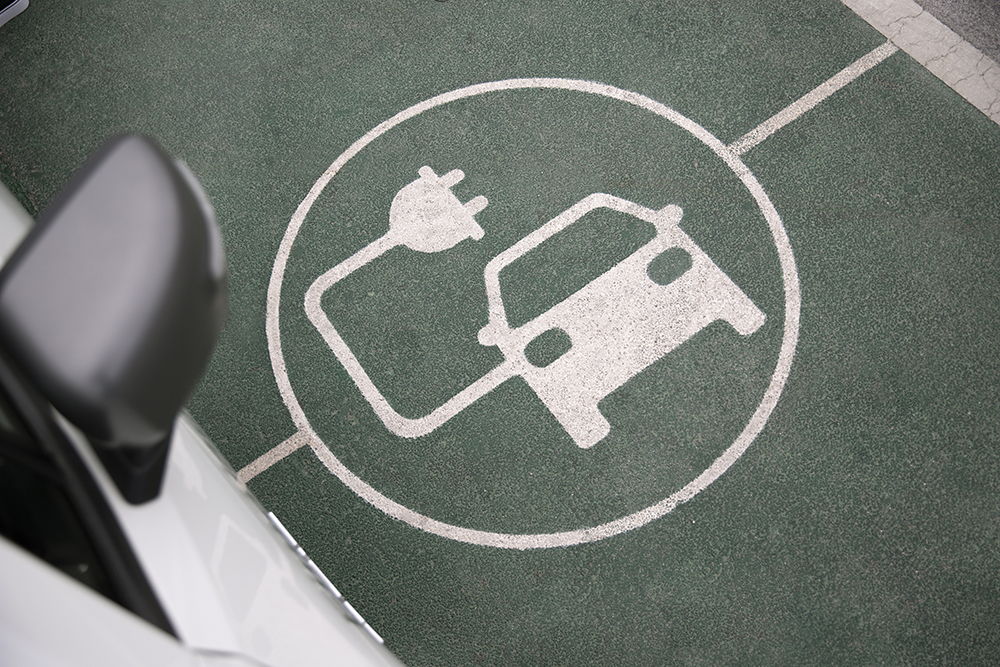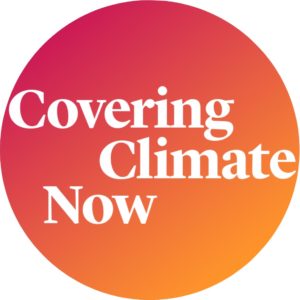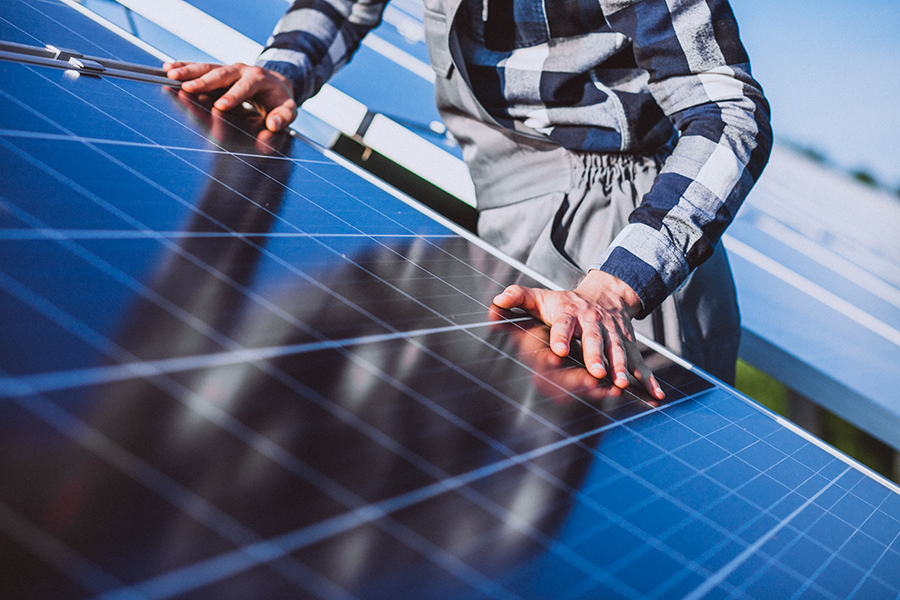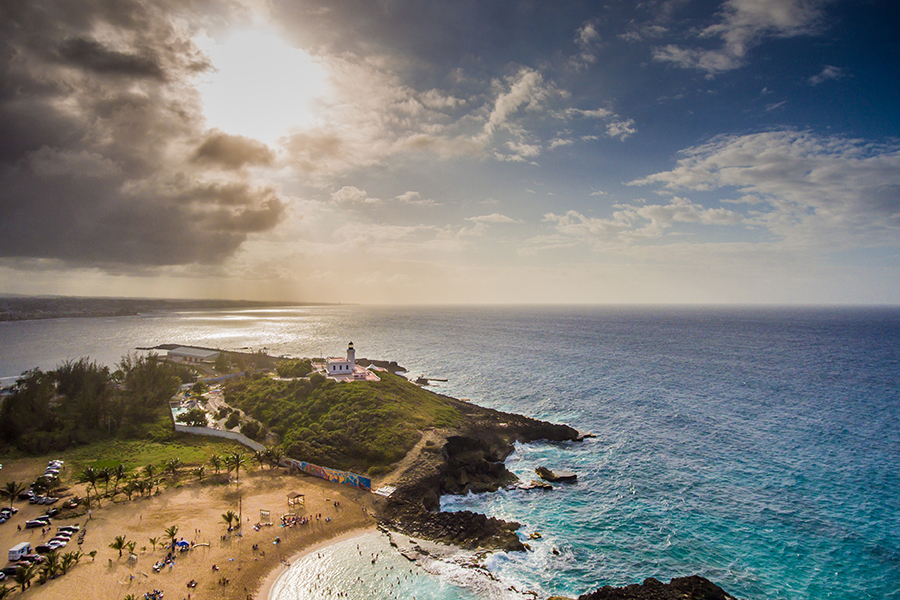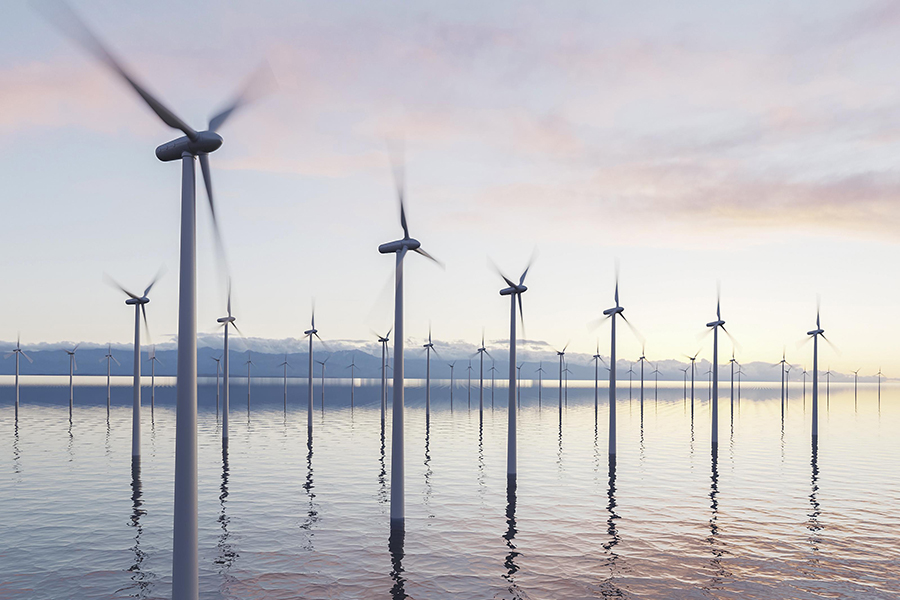The flexible timing of vehicle charging can save the day — even during heat waves when electricity consumption surges.
You may have wondered if places like California can support electric cars because the state’s electricity grid seems to already be overloaded. In recent years, spikes in electricity demand during heat waves have contributed to rolling blackouts.
But EV charging doesn’t have to overload the grid, and the reason is the peaks and valleys in energy use.
This sequence of graphs steps through a recent example of record-breaking electricity use in California to illustrate why EV charging need not exacerbate electricity shortages.
In early September 2022, a widespread, long-lasting heat wave in California and the Western United States set new all-time records for high electricity demand.

Demand peaked each evening between 5 and 8 p.m.
These peaks were caused by a combination of at-home activities like cooking plus the use of fans and air-conditioning as people returned to their homes in the late afternoon and early evening.
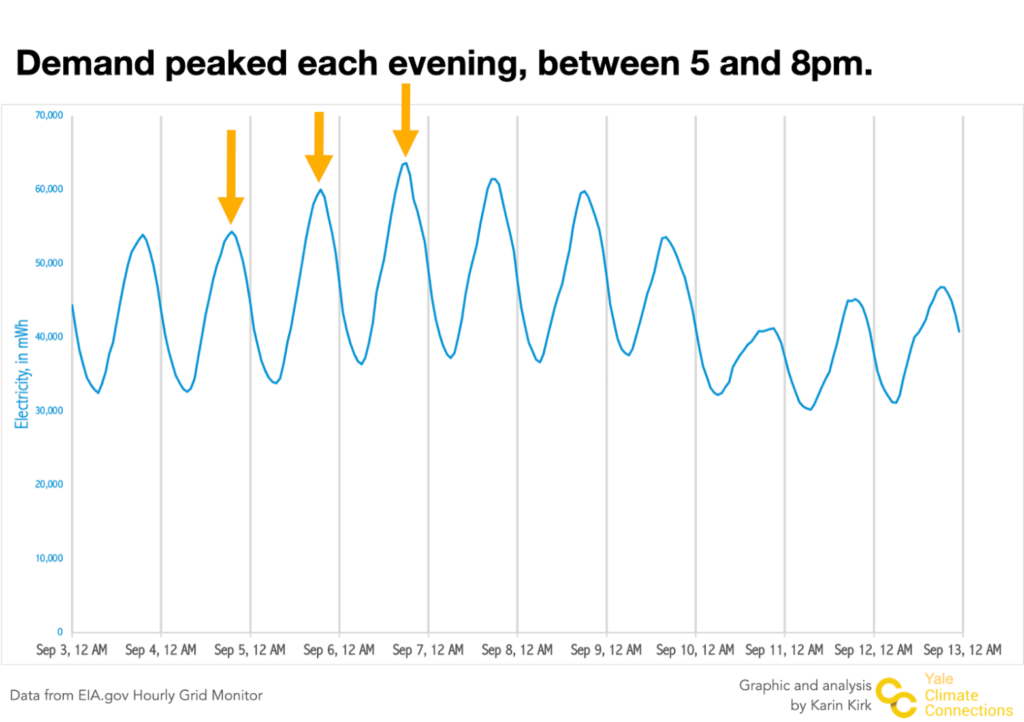
The orange line shows the amount of electricity available. Those two lines match, which shows that the California Independent System Operator, which oversees the state’s bulk electricity system, met demand. Electricity supply comes from a combination of electric generation plus imports from other places during high-demand times.

During times of highest demand, the California Independent System Operator asked customers to limit their energy use. This approach worked and avoided potential rolling blackouts. Good job, everyone!

But what about adding even more electricity demand from EVs? Would that overload the grid?
Probably not — because EV charging does not need to happen during a specific time of day. EVs can easily be charged outside of the peak times of 5 to 8 p.m., and utilities can incentivize customers to do so.

In the case of California, charging in the middle of the day is the least polluting because that’s when solar energy is at full strength. Different locations use different sources of energy, so the least-polluting time of day depends on where you are.
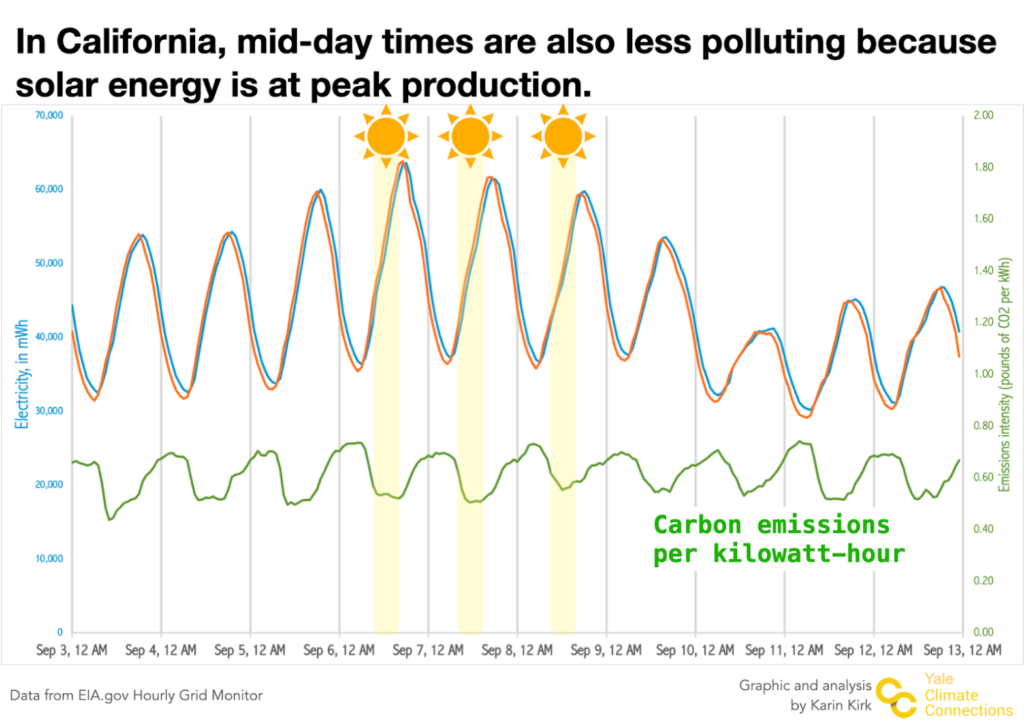
The bottom line is that the timing of EV charging is flexible. Charging does not have to occur during times of peak electric demand, so the added energy use is much easier to manage. Some utility companies are already working with their customers to schedule EV charging at times when electricity demand is low. (See examples from Alabama, Minnesota, and California.)
This is good news: It means that electric vehicles won’t necessarily cause disruptions to the electricity supply.
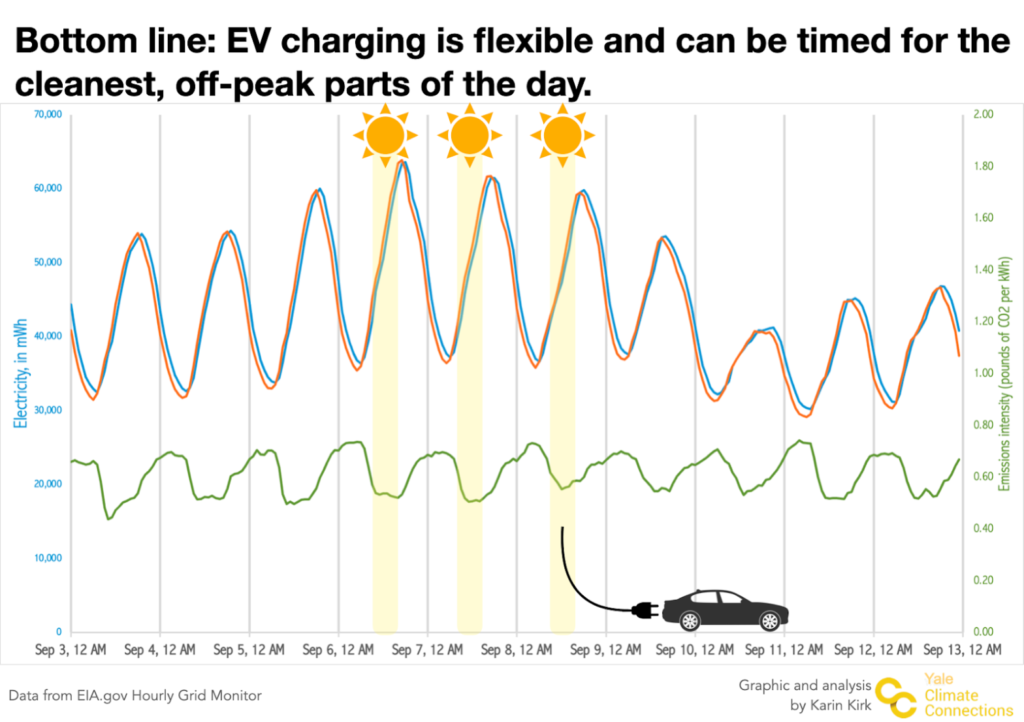
Notes and resources
See our related story that shows what real-time electricity data tells us about energy and our lives: A website about the U.S. electricity grid offers a mesmerizing view
See the electricity data that was used to make these graphs from the Energy Information Administration, or peruse real-time electricity generation and use for the continental U.S. with the EIA Hourly Grid Monitor.
Learn more about electricity management during this heat wave from the California Independent System Operator in a summary or a deep-dive report.
Karin Kirk is a geologist and freelance writer with a background in climate education. This story originally appeared in Yale Climate Connections and is republished here as part of Covering Climate Now, a global journalism collaboration strengthening coverage of the climate story.

